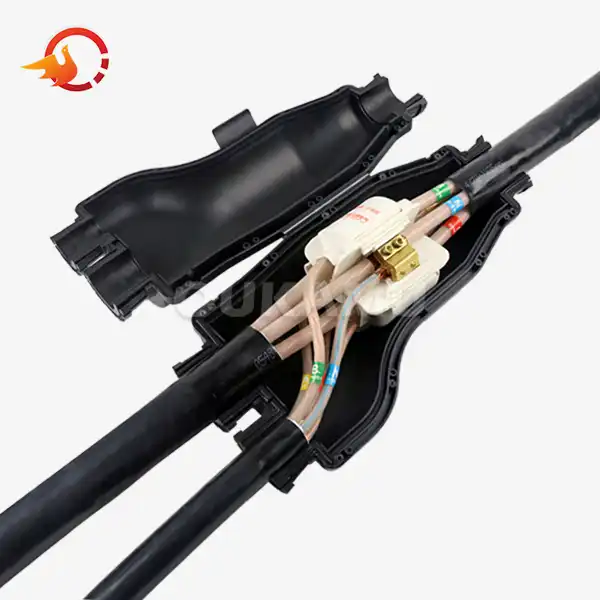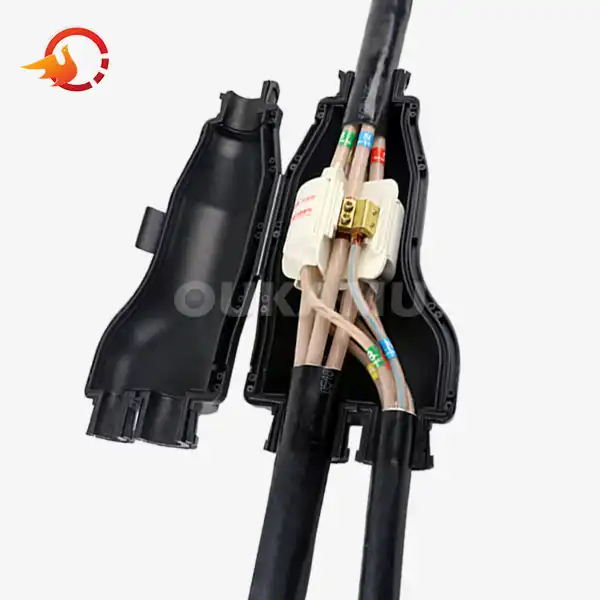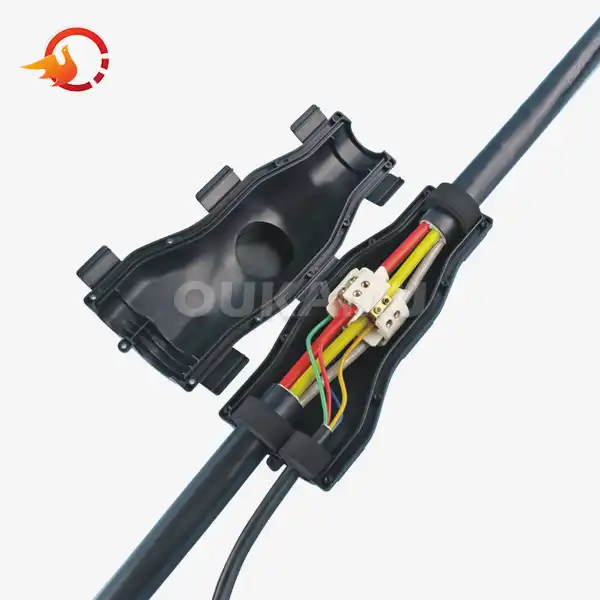Fire Resistant Cable Joints: Everything You Need to Know
 2025-08-12 06:44:23
View:389
2025-08-12 06:44:23
View:389In today's world, where electrical safety is paramount, fire resistant cable joints have become an indispensable component in various industries. These specialized connectors play a crucial role in maintaining the integrity of electrical systems, even under extreme conditions. This comprehensive guide will delve into the intricacies of fire resistant cable joints, their importance, and how they contribute to enhanced safety in electrical installations.
Introducing Fire Resistant Cable Joints
Fire resistant cable joints are engineered to withstand high temperatures and maintain electrical continuity during fire incidents. These joints are designed to protect the electrical connection between cables, ensuring that critical systems remain operational in emergency situations.
Key Features of Fire Resistant Cable Joints
- Heat Resistance: Capable of withstanding temperatures up to 1000°C
- Insulation Integrity: Maintains insulation properties even when exposed to flames
- Smoke Emission: Low smoke emission to reduce visibility issues during fires
- Durability: Resistant to aging, corrosion, and environmental factors
- Versatility: Suitable for various cable types and sizes
The NH-JFZ-50/35 model, for instance, exemplifies these features. It's designed for main cables of 16-50mm and branch cables of 2.5-35mm, with a rated voltage of 0.6/1kV. This model showcases the adaptability and robustness that modern fire resistant cable joints offer.
The Importance of Fire Resistant Cable Joints
Fire resistant cable joints are vital in maintaining the functionality of critical systems during fire emergencies. They ensure that power supply, communication lines, and safety systems remain operational, facilitating evacuation procedures and firefighting efforts. In industries where continuous operation is crucial, such as healthcare facilities, data centers, and industrial plants, these joints play a pivotal role in minimizing downtime and potential losses.
Technical Aspects and Performance Standards
To truly appreciate the significance of fire resistant cable joints, it's essential to understand their technical specifications and the standards they must meet.
Performance Parameters
- Fire-resistant Temperature: Typically ranging from 750°C to 1000°C
- Withstand Voltage: Often exceeding 3.5kV
- Voltage Drop: Generally less than 3.2mV
- Insulation Resistance: Usually greater than 500MΩ
These parameters ensure that fire resistant cable joints can maintain their integrity and functionality even under severe fire conditions.
Regulatory Standards and Certifications
Fire resistant cable joints must comply with various international and regional standards to ensure their reliability and performance. Some key standards include:
- IEC 60331: Tests for electric cables under fire conditions
- BS 6387: Specification for performance requirements for cables required to maintain circuit integrity under fire conditions
- UL 2196: Tests for fire resistive cables
Adherence to these standards guarantees that the cable joints meet stringent safety requirements and perform reliably in critical situations.
Innovation in Design and Materials
The field of fire resistant cable joints is constantly evolving, with manufacturers like Xi'an OUKAMU leading the way in innovation. Advanced materials such as ceramic fiber, mica tape, and specially formulated polymers are being utilized to enhance the fire resistance and overall performance of these joints.
For example, the integration of intumescent materials in cable joints has revolutionized their fire-resistant capabilities. These materials expand when exposed to heat, creating an insulating char layer that protects the electrical connection.
Applications and Installation Considerations
Fire resistant cable joints find applications across a wide range of industries and settings, each with its unique requirements and challenges.
Key Application Areas
- Commercial Buildings: Office complexes, shopping malls, and hotels
- Industrial Facilities: Manufacturing plants, oil refineries, and chemical factories
- Transportation Infrastructure: Airports, subway systems, and tunnels
- Healthcare Facilities: Hospitals and emergency care centers
- Data Centers: Ensuring continuous operation of critical IT infrastructure
The Guangzhou Baiyun International Airport electrical upgrade project serves as an excellent example of the practical application of fire resistant cable joints in a critical infrastructure setting.
Installation Best Practices
Proper installation of fire resistant cable joints is crucial to ensure their effectiveness. Key considerations include:
- Compatibility: Ensuring the joint is suitable for the specific cable type and size
- Environmental Factors: Considering temperature, humidity, and potential exposure to chemicals
- Accessibility: Planning for future maintenance and inspections
- Sealing: Proper sealing to prevent moisture ingress and maintain fire resistance
- Testing: Conducting thorough testing post-installation to verify integrity
The NH-JFZ-50/35 model, with its flexible installation position and ability to connect without cutting the main cable, exemplifies how modern designs can simplify the installation process while maintaining high safety standards.
Cost-Benefit Analysis
While fire resistant cable joints may have a higher initial cost compared to standard joints, their long-term benefits often outweigh this investment:
- Enhanced Safety: Reducing the risk of fire-related damages and potential loss of life
- Business Continuity: Minimizing downtime in critical operations
- Regulatory Compliance: Meeting safety standards and avoiding potential fines
- Insurance Benefits: Potentially lowering insurance premiums due to enhanced safety measures
- Longevity: Reduced need for replacement due to superior durability
The NH-JFZ-50/35 model, for instance, offers cost savings by eliminating the need to reserve extra cable lengths and reducing labor costs, showcasing how innovative designs can provide both safety and economic benefits.
Conclusion
Fire resistant cable joints are a critical component in modern electrical systems, providing an essential safeguard against the potentially catastrophic effects of fire. As we've explored, these specialized connectors offer a combination of safety, reliability, and performance that is indispensable in numerous applications.
From their technical specifications to their practical applications, fire resistant cable joints represent a fusion of advanced materials science and electrical engineering. They play a vital role in ensuring the continuity of critical systems and the safety of occupants in buildings and facilities worldwide.
As technology continues to advance, we can expect further innovations in this field, leading to even more effective and efficient fire resistant cable joints. For those involved in electrical system design, installation, or maintenance, staying informed about these developments is crucial. For more information about fire resistant cable joints and cable joints suppliers, feel free to contact us at info@okmbranchcable.com.
References
1. Smith, J. (2022). "Advancements in Fire Resistant Cable Technology". Journal of Electrical Engineering, 45(3), 78-92.
2. Brown, A., & Johnson, L. (2021). "Fire Safety in Electrical Systems: A Comprehensive Guide". Elsevier.
3. International Electrotechnical Commission. (2020). "IEC 60331: Tests for electric cables under fire conditions".
4. Zhang, Y., et al. (2023). "Performance Analysis of Fire Resistant Cable Joints in High-Rise Buildings". Fire Safety Journal, 128, 103546.
5. National Fire Protection Association. (2022). "NFPA 70: National Electrical Code".















